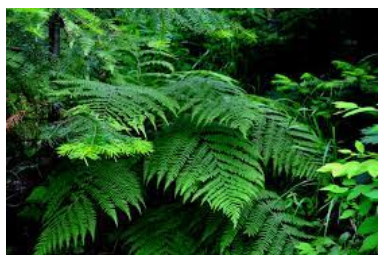Table of Contents
Pteridophytes are an intriguing group of plants that hold a significant place in the evolutionary history of terrestrial flora. These vascular plants have been around for millions of years and played a crucial role in paving the way for the emergence of modern plant species.
What are Pteridophytes?
Pteridophytes are non-flowering vascular plants that reproduce through spores rather than seeds. They occupy a unique position in plant taxonomy, lying between bryophytes (non-vascular plants) and seed-bearing plants (gymnosperms and angiosperms) in the plant kingdom. Pteridophytes were dominant during the Carboniferous period but have now been largely overshadowed by angiosperms, the flowering plants.
General Characteristics of Pteridophytes
Vascular Tissues: Unlike bryophytes, pteridophytes possess vascular tissues – xylem and phloem. Xylem conducts water and minerals from the roots to other parts of the plant, while phloem transports organic nutrients throughout the plant.
Leaves: In pteridophyta, the leaves can be either small (referred to as microphylls) as seen in Selaginella or large (referred to as macrophylls) like those found in ferns.
Roots: Pteridophytes have true roots, which anchor the plant and absorb water and minerals from the soil.
Stems: The stems of pteridophytes can be underground (rhizomes) or aerial, and they often grow horizontally.

Reproduction in Pteridophytes
- Pteridophytes possess a main plant body known as the sporophyte.
- The sporophytes of pteridophytes bear sporangia, surrounded by leaf-like appendages called sporophylls. In some instances, sporophylls may form compact structures known as strobili or cones, as observed in plants like Selaginella and Equisetum.
- Sporangia produce spores through meiosis in spore mother cells.
- These spores germinate into inconspicuous, small but multicellular, free-living gametophytes called prothallus, which are primarily photosynthetic. The growth of these gametophytes is reliant on cool, damp, and shady environments.
- Due to their specific requirements and the need for water for fertilization, living pteridophytes have limited distribution, mainly found in narrow geographical regions.
- Gametophytes produce male and female sex organs known as antheridia and archegonia, respectively.
- Water is essential for the transfer of antherozoids (male gametes released from the antheridia) to the archegonium.
- The fusion of the male gamete with the egg present in the archegonium results in the formation of a zygote. Subsequently, the zygote develops into a well-differentiated sporophyte, which becomes the dominant phase of pteridophytes.
- Most pteridophytes are homosporous, meaning they produce spores of similar kinds. However, some genera, like Selaginella and Salvinia, are heterosporous, generating two types of spores – macrospores and microspores – which give rise to female and male gametophytes, respectively.
- The female gametophytes in these plants remain attached to the parent sporophytes for varying periods, and the development of zygotes into young embryos occurs within the female gametophytes, a crucial step in the evolution towards seed formation.
Classification of pteridophytes
Pteridophytes are categorized into four classes, namely Psilopsida represented by Psilotum, Lycopsida including Selaginella and Lycopodium, Sphenopsida comprising Equisetum, and Pteropsida consisting of Dryopteris, Pteris, and Adiantum.
Frequently asked questions on Pteridophytes
How do pteridophytes differ from seed-bearing plants?
Pteridophytes reproduce through spores, while seed-bearing plants (gymnosperms and angiosperms) reproduce through seeds. Pteridophytes lack flowers and fruits, which are characteristic of seed-bearing plants.
Why are pteridophytes called vascular embryophytes?
Pteridophytes are called vascular embryophytes due to their possession of vascular tissues (xylem and phloem) for water and nutrient transport and their ability to produce embryos during sexual reproduction, exhibiting alternation of generations.
Name two heterosporous pteridophytes.
Two heterosporous pteridophytes are Selaginella and Salvinia. These plants produce two types of spores: microspores and megaspores. The microspores give rise to male gametophytes, and the megaspores develop into female gametophytes, enabling these plants to have separate male and female reproductive structures.
Do pteridophytes form cone?
Yes, some pteridophytes form cones. For example, the class Sphenopsida includes horsetails (Equisetum), which produce cone-like structures known as strobili. Strobili contain sporangia that produce spores.
Why are pteridophytes restricted to narrow geographical locations?
Pteridophytes are restricted to narrow geographical locations due to their dependence on moist environments and water for fertilization. Gametophytes require cool, shady places to grow, and their flagellated sperm need water for transfer to the female reproductive structures. These specific requirements limit their distribution to suitable habitats.






